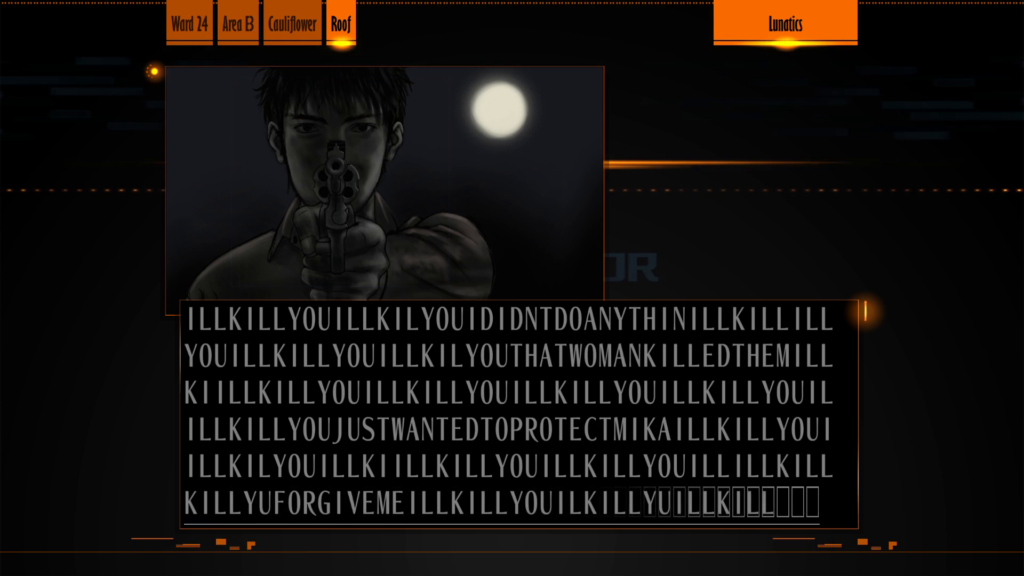
Despite Ryo and Minato’s cases, however, the wanton random killings of the first Kamui are not the complete nature of Kamui. Even the imaginary Silver Case Kamui in “Decoyman” does not kill random people: Shimohira Ayame kills first Republic agents trying to capture her and then other Shelter Kids who had relationships with Fujiwara Kamui. Rather, these serial murders enact the lowest order of “facts,” the “truth” of the Kamui the syndicates propagandize against as an evil monster. For this reason, Ryo and Shimohira’s violence occurs early in the story. The second targets specific people, already a slightly higher level of “facts” than Ryo. Because he is in a separate work, Minato’s murders are not part of the broader narrative pattern.
There emerges a relatively consistent image of the Silver Case Kamui. Often taken for a supernatural evil, he begins murdering as a teenager, as shown in the timeline Furuya reads in “KamuiDrome.” The Silver Case Kamui eventually murders Nakane Ginji and is arrested by Kusabi. But Kamui is deemed mentally unfit for trial and confined to the IMM Hospital until 1999. The first Kamui is consistently identified as a “serial killer,” a term indicating self-gratifying sadistic violence and psychological compulsion, more like Minato, rather than financial or political violence or even the jealous violence Shimohira acts out.
This first Kamui, the juvenile serial killer notorious across Japan who is taken alive and treated for mental illness, is the one most directly inspired by the serial killer Sakakibara Seito. The Silver Case Kamui exaggerates this criminal to supernatural proportions, if “exaggeration” is the word for the way Suda started with thoughts about heinous real-life atrocities and incorporated these considerations into a cyberpunk noir adventure game. Suda indicates that Sakakibara inspired him to wonder about the origins of crime and social dysfunction. The remainder of The Silver Case considers this question, reaching the ultimate answer in the Triangle Towers, the “curse” that haunts all Kamuis.
The other Kamuis reveal why the powers that be, men like Natsume and Kusabi, find Kamui such a visceral threat. For the ELBOW-aligned authorities murder far more people than even the Silver Case Kamui.